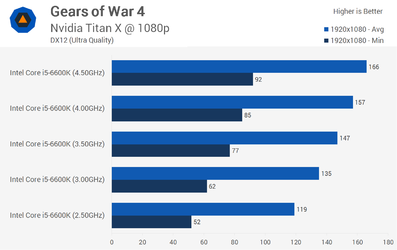No, I know how to use the different offsets as I've already dealt with Vdroop but the voltage is still high according to even the Silicon Lottery 80% value. You may be right, I may have lost the lottery but then again, it may very well be the board, regardless if you're unaware of the problems some people have been having. A friend of mine on another forum said he believed that using the offset settings was better then LLC, I just haven't made up my mind in that regard yet, he may be right also.
The only way to really know is to throw another 6600K into my machine and see how it handles. And no, I'm not having a hard time understanding the offset, it's very straight forward. LLC does the same thing for the most part but does it in a different way according to motherboard circuitry, or so I have been told by MSI.
You win the gross generalization award of the day, congratulations! You're contradicting yourself. If you want to help me out, fine, but please, don't insult me wingman.
-laz.
I'm not trying to insult you, I know how LLC and VRM Buck converter work. So when I read what your are saying about LLC and Adaptive + Offset Vcore, also your motherboard, I can't figure out what you know.
I'm not contradicting my self, all Z170 motherboards are made for overclocking and capable of mid overclocking just fine, It is the processors that are not able to overclock the same or use the same voltages.
The problem with overclocking a lot folks don't actually know what the settings in Bios do, so the is a lot of misunderstanding and false information.
No, I know how to use the different offsets as I've already dealt with Vdroop but the voltage is still high according to even the Silicon Lottery 80% value.
Silicon Lottery is 1.392V CPU VCORE (Or less) for 4.6GHz. I know you can use offsets, however do you know what they are doing?
A friend of mine on another forum said he believed that using the offset settings was better then LLC, I just haven't made up my mind in that regard yet, he may be right also.
I will go over this again. Adaptive + Offset, means VID=(Adaptive), the VID is communicated by the microprocessor to the VRM + the offset voltage you set.
Separate CPU's in the same class have varying VID, so every CPU has it's own VID.
Override Mode = fixed voltage so it does not use the Dynamic VID.
Adaptive + Offset = VID + offset.
Override + Offset = Fixed voltage and Fixed voltage.
LLC (Load Line Calibration) is a Intel specification to prevent over shoot with voltage when there is a varying load.
Read this
If you've ever overclocked a system, chances are that at some point or another you've had opportunity to become upset with your Vdroop "problem." Some users, confused as to why their system refuses to exactly match actual processor supply voltage to the value specified in BIOS, are quick to blame the quality their motherboard; still others find fault with the difference noted between their board's idle and full-load processor supply voltages. Actually, load line droop (Vdroop) is an inherent part of any Intel power delivery design specification and serves an important role in maintaining system stability. In most cases, comments regarding unacceptable power delivery performance are completely unfounded. To make matters worse, unjustified negative consumer perception surrounding this often misunderstood design feature eventually forced a few motherboard manufacturers to respond to enthusiasts' demands for action by adding an option in their BIOS that effectively disables this important function.
http://www.anandtech.com/show/2404/5
You may be right, I may have lost the lottery but then again, it may very well be the board, regardless if you're unaware of the problems some people have been having.
What problems are some people having with the MSI Z170A Gaming M5?

